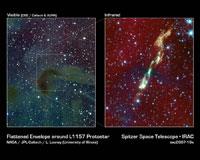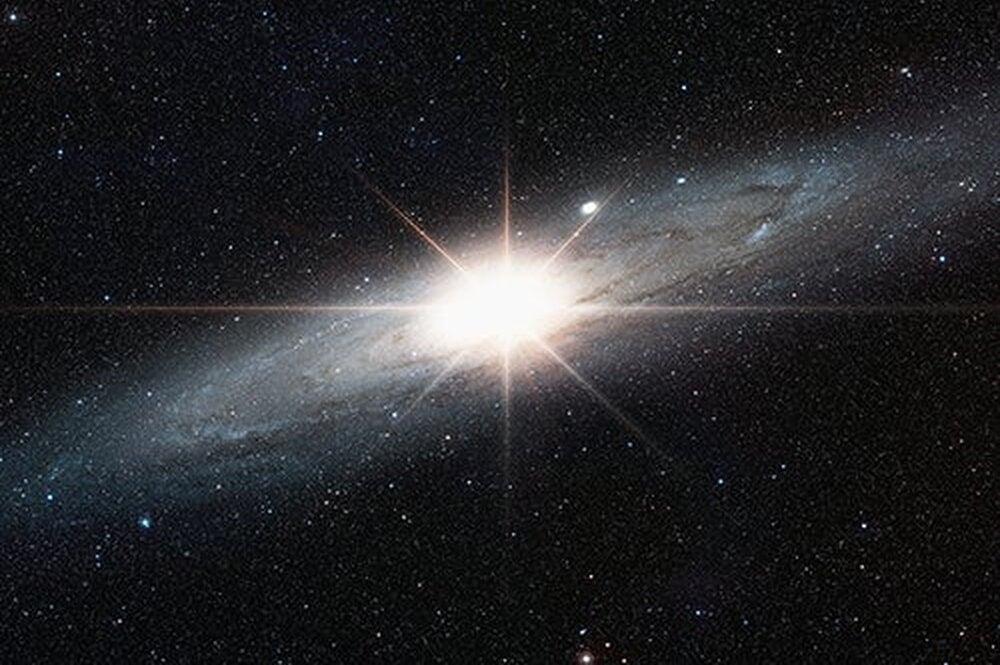

Astronomers at the University of Illinois have found the first clear evidence for a cradle in space where planets and moons form. Using NASA's Spitzer Space Telescope, they've spotted a flattened envelope of gas and dust surrounding a young protostar that together, in theory, will someday form a solar system.
Located about 800 light-years away in the constellation Cepheus, the object is obscured by dust and therefore invisible to the eye. However, the telescope's infrared camera penetrated the dust, revealing the structures within.

"We are seeing this object in the early stages of stellar birth," says U of I astronomy professor Leslie Looney, the lead author of the paper accepted for publication in Astrophysical Journal Letters. "Eventually, the protostar will form into a star much like our sun, and the disk will form into planets and moons."
In star-formation theory, a cloud of gas and dust collapses to form a star and its planets. As the cloud collapses, it begins to rotate faster and faster. The force of the growing magnetic field ejects gas and dust along the magnetic axis, forming bipolar jets of shocked molecular hydrogen gas, in this case 1 ½ light-years long, erupting from the protostar's two magnetic poles.
These bright, bipolar jets were seen in the photographs analyzed by astronomers at the U of I. The planet-forming region is perpendicular to and roughly centered on the jets. The region, appearing as a flattened disk, is seen in silhouette against the background of galactic infrared emission.
Theorized, but never before seen, the flattened disk is an expected outcome for cloud-collapse theories that include magnetic fields or rotation.
"Some theories had predicted that envelopes flatten as they collapse onto their stars and surrounding planet-forming disks," Looney says. "But we hadn't seen any strong evidence of this until now."
With Looney, co-authors of the paper are former undergraduate student John Tobin (now at the University of Michigan) and graduate student Woojin Kwon.


